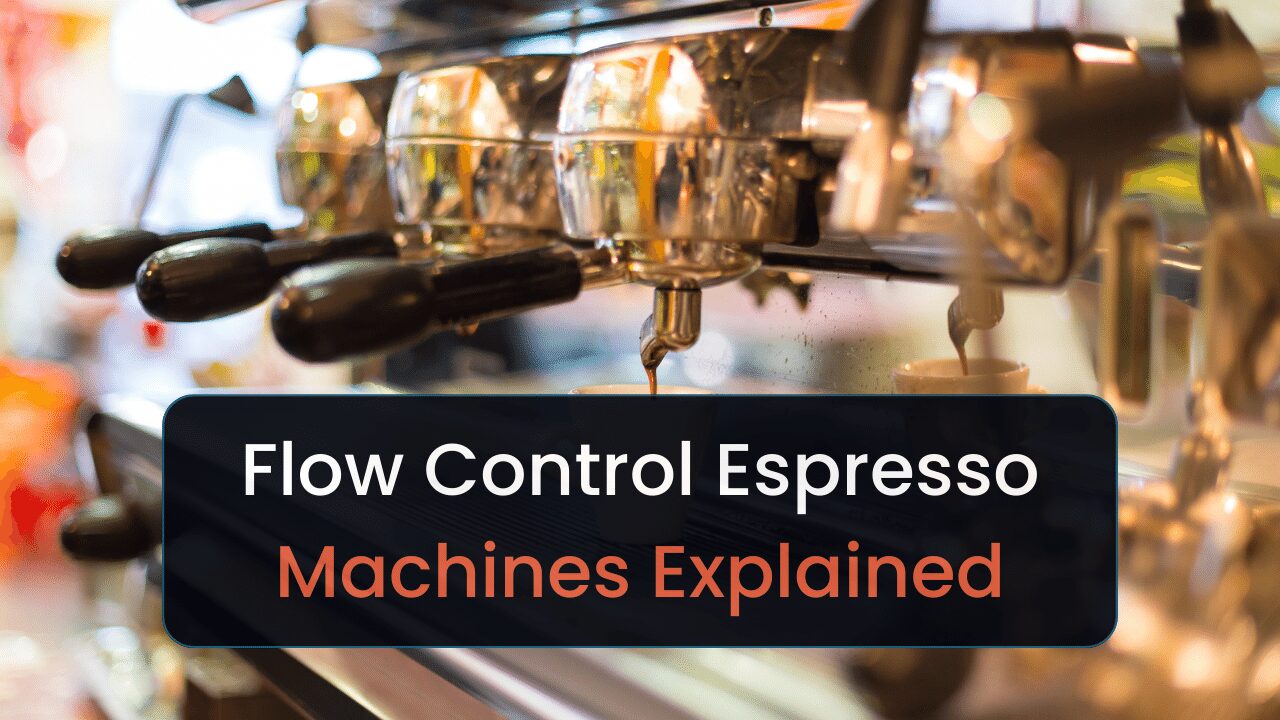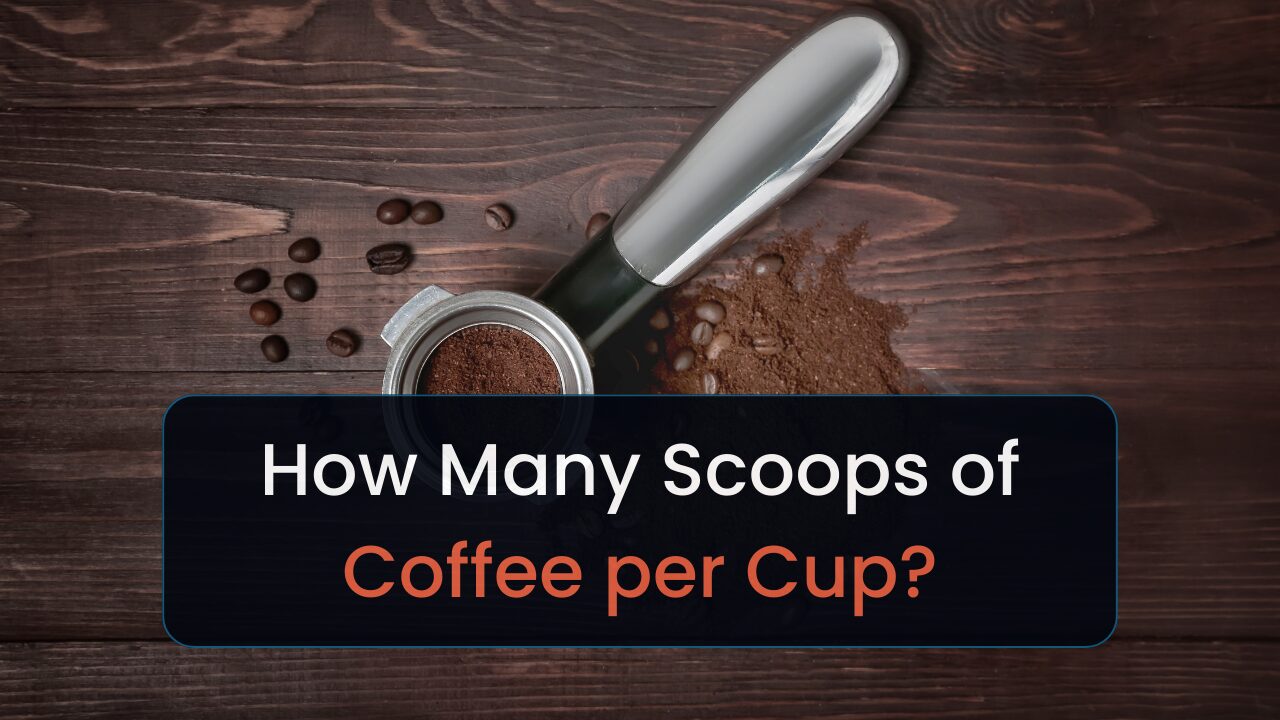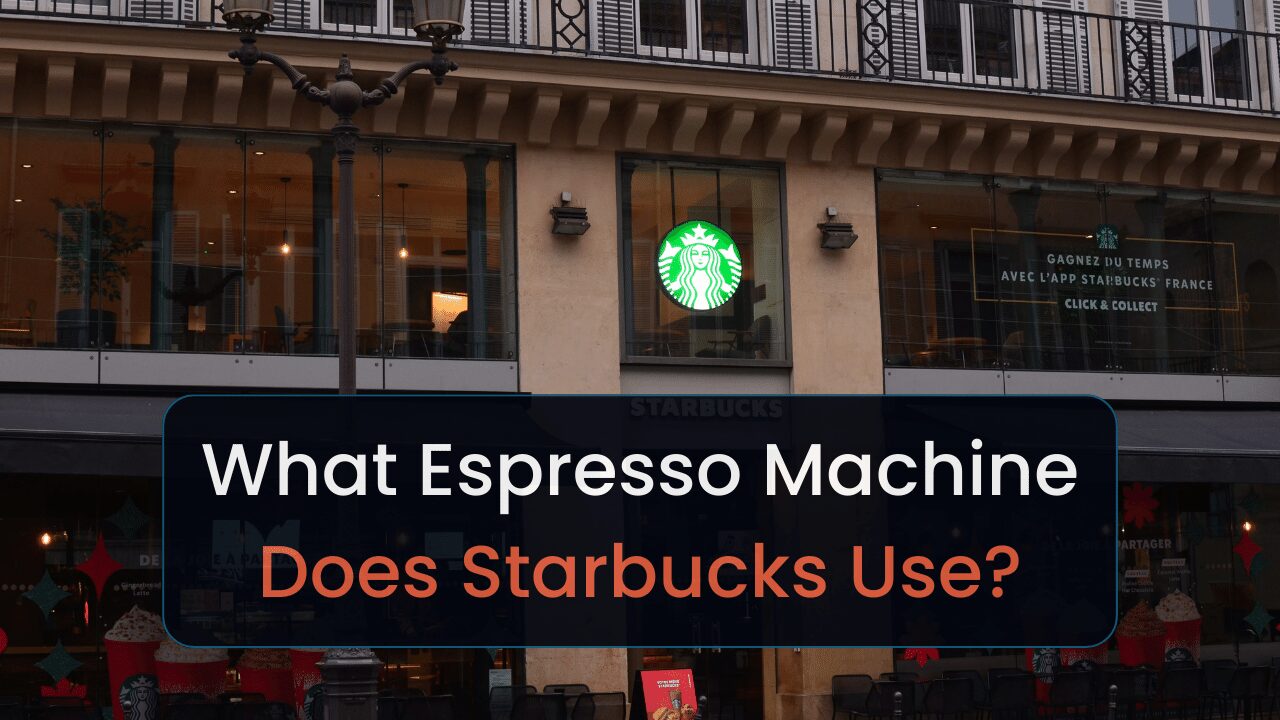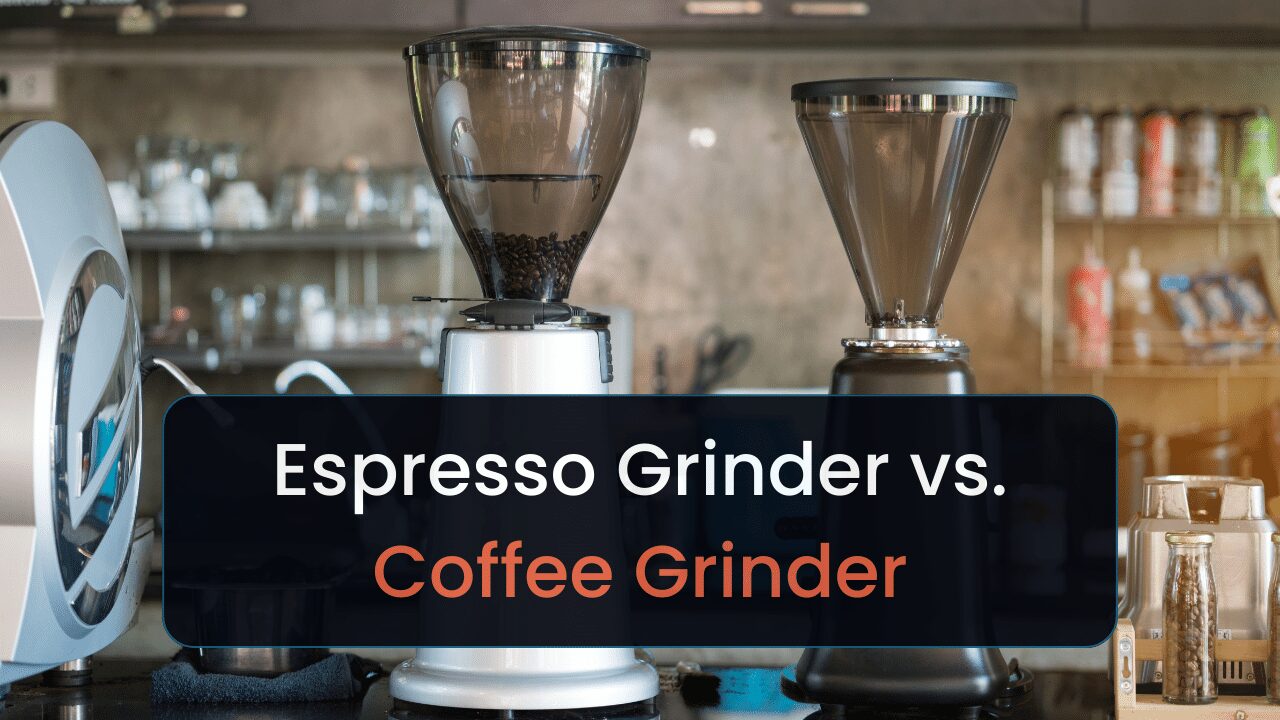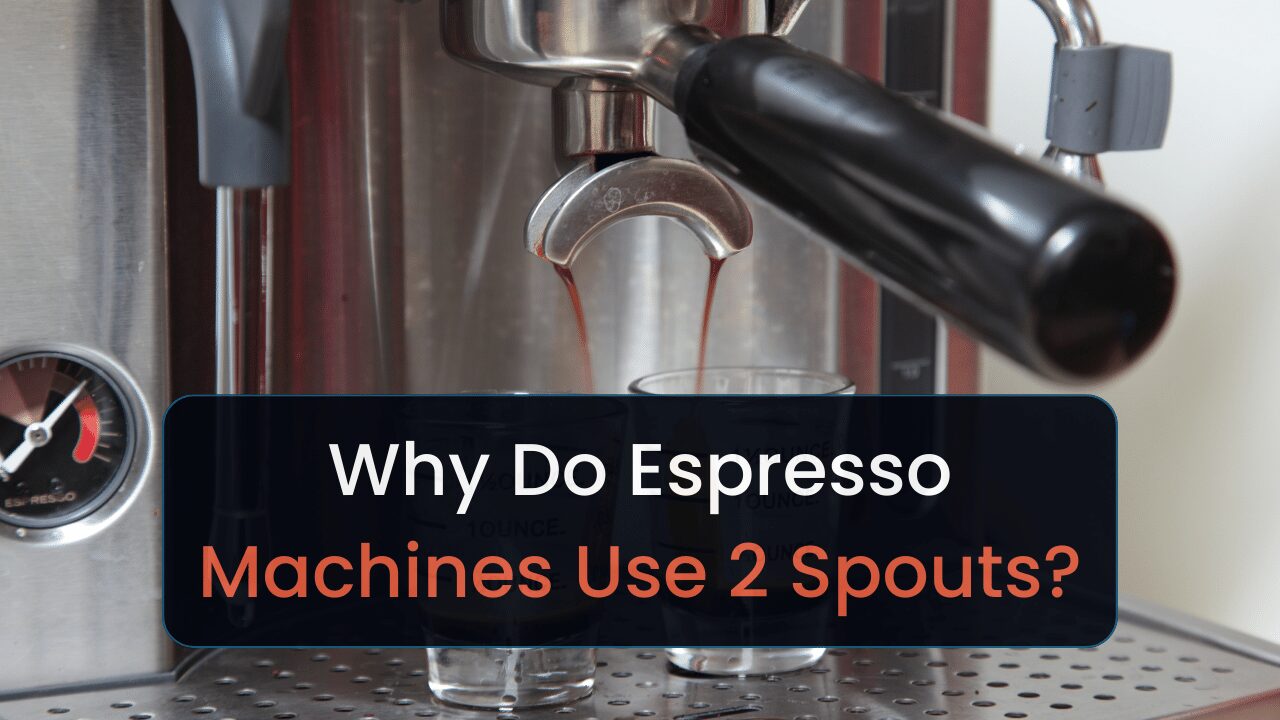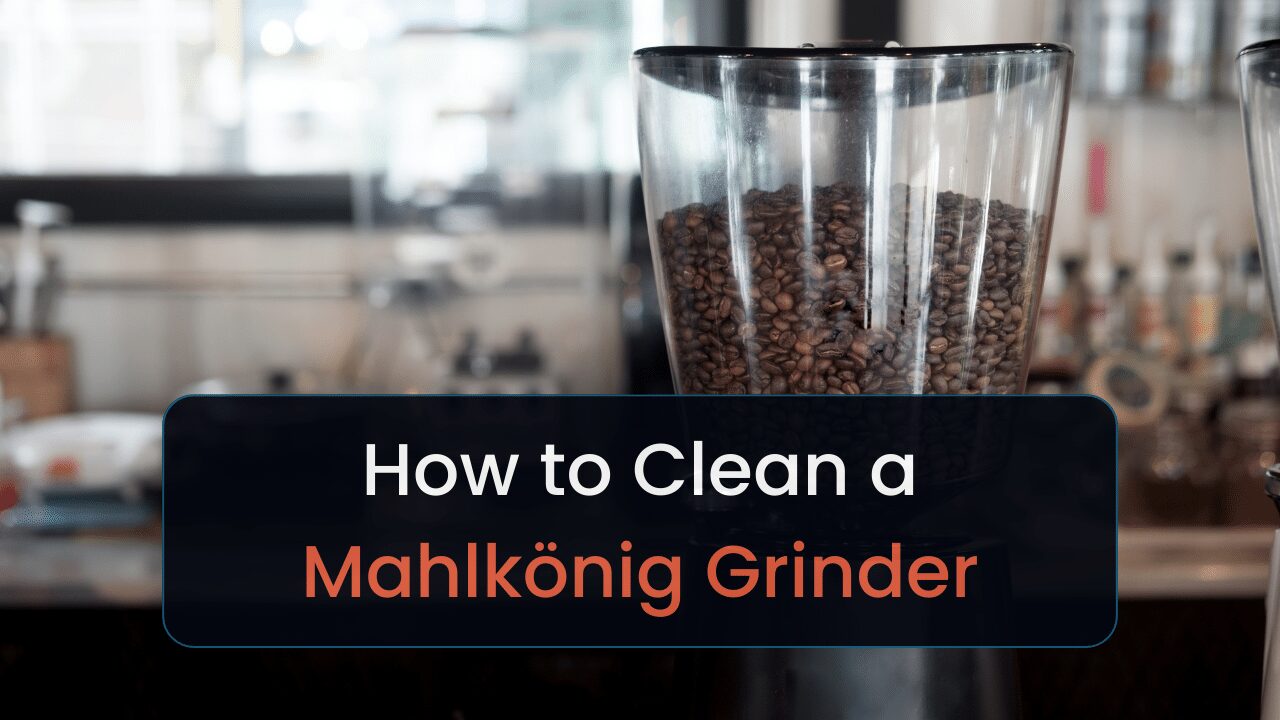This is a review of the best coffee makers that connect directly to plumbing. Read on to learn more.
I often hate continually having to refill coffee makers after water reservoirs refill. That led me to build this list of coffee makers that’ll connect directly to a home’s plumbing.
I chose the Keurig K3500 as the number 1 option due to its ability to produce coffee that’ll taste like it’s from a coffee shop.
You may not want drip coffee or care for the Keurig’s design. I provide plenty of alternatives to consider.
Keep reading to find your next machine.
Top 6 Direct Water Line Coffee Makers
- Keurig K3500: Best overall
- Nespresso Vertuo + Inline Water Filter Kit: Best for small spaces
- La Pavoni Bar-Star 2V-R 2-Group: Best commercial machine
- BUNN My Cafe: Best BUNN maker
- Nuova Simonelli Musica Direct Connect: Best premium option
- Keurig K2500: Best maker, UK
What Is a Coffee Maker With a Water Line & Why It’s Necessary
A coffee maker with a water line directly connects to your home’s water supply. It eliminates the need for manual refilling. You get a fresh brew anytime without worrying about the water level.
This feature is necessary for heavy coffee drinkers or large households. It saves time and ensures a consistent taste. Plus, it’s a boon for commercial settings like offices or cafes, where coffee demand is high.
And if you’re looking for a commercial-level machine, every single one of them has a direct water line. You can find the best commercial espresso machines here.
Or you can check out all the plumbed machines we offer here.
6 Best Plumbed Coffee Makers for Home Use
Coffee makers that connect directly to water lines can improve your coffee’s taste and reduce the need to constantly refill your machines. And eliminates the need to descale since you’re filtering out minerals.
I’ll review a bunch of the best choices. Though, many of them work best for commercial purposes. However, you could throw them in an office to make life easier.
Here’s some acronyms you’ll find in this guide:
- Dimensions:
- D: depth
- W: width
- H: height
Anything else you won’t understand will likely fall under the buyer’s guide. Don’t just skim the article. Otherwise, you’ll miss vital information.
1. Keurig K3500: Best Overall
![6 Best Coffee Makers With Water Lines in [currentyear] 1 keurig k3500](https://timscoffee.com/wp-content/uploads/2023/06/keurig-k3500.png)
| Price * | $ |
| Machine Type | Capsule coffee maker |
| Dimensions | 18 × 12 × 17.4 in (D, W, H) |
| Machine Material | Plastic & stainless steel |
| Water Line Type | Direct |
| Warranty | 1 year |
Pros
- Offers five different brew sizes.
- Includes a dedicated hot water line.
- Features a user-friendly, high-resolution touchscreen.
Cons
- Requires a separate purchase for direct water line plumbing kit.
- Does not brew specialty beverages like lattes or cappuccinos.
The Keurig K3500 is the ultimate choice for high-volume settings, offering direct water plumbing compatibility, eliminating the need for water reservoir refills.
The K3500 is a pod coffee maker that’ll brew drinks based on the type of pod inserted. Doesn’t matter whether you insert a decaffeinated pod or one with tea. Great for quickly brewing drinks and not storing various coffee bean types.
Its upgraded brewing system provides hot coffee faster and accommodates high-throughput settings with its new 12 oz brew size. This machine is a valuable investment for those seeking efficiency and convenience.
And once you’re done brewing, the machine will automatically spit the pods into a bin behind the machine. A great touch for folks who don’t want to continually open and close the machine whenever brewing coffee.
And this bin is accessible from the front of the machine. If you had the machine beneath a cupboard, you wouldn’t need to awkwardly reach your hands over or behind the maker to access the bin.
You must buy a separate kit for all the components to plug it into your plumbing, a huge downer considering its price.
Then it doesn’t brew drinks like lattes. But it’s not an espresso machine. We shouldn’t expect anything more than brewing whatever Keurig pods you have.
Want something smaller?
2. Nespresso Vertuo + Inline Water Filter Kit: Best Countertop Coffee Maker With Water Line
![6 Best Coffee Makers With Water Lines in [currentyear] 2 nespresso vertuo inline water filter kit](https://timscoffee.com/wp-content/uploads/2023/06/nespresso-vertuo-inline-water-filter-kit.png)
| Price * | $ |
| Machine Type | Capsule maker |
| Dimensions | 12.7 × 8.7 × 12.8 in (D, W, H) |
| Machine Material | Plastic & metal |
| Water Line Type | NA |
| Warranty | 1 year |
Pros
- Brews smooth coffee consistently.
- Virtually mess-free operation.
- Heats up quickly for fast brewing.
Cons
- Requires purchase of Vertuo pods.
- Lacks built-in milk frother.
- Recycling pods could be easier.
The Nespresso Vertuo with an inline water filter kit is the most compact coffee maker that connects directly to plumbing due to its sleek design and efficient use of space.
Nespressos are pod coffee makers, which produce whatever kind of coffee is in the pod you insert based on its specifications. These machines will read the pod’s barcodes and brew per its instructions.
Is it a ristretto pod? Then it’ll brew a concentrated espresso shot.
The Nespresso Vertuo justifies its price with its advanced brewing technology and versatility. It uses special barcode-reading technology for optimal coffee extraction. And it offers a wide range of coffee options with different flavors and blends supplied by pods.
Unfortunately:
There’s no such thing as a Nespresso maker that includes a direct water line connection by default. You must invest in buying a separate kit. The kit gives you all the tools you need to run a tube connecting your water line to the Nespresso’s reservoir.
From there, you flip a switch on the kit and it’ll refill your reservoir, which prevents you from lugging the reservoir to and from your sink. I wish it detected the water level and refilled automatically, but this is the most cost-efficient method.
And you’ll need a separate milk frother if you want lattes or cappuccinos. As this Nespresso model doesn’t have a built-in one. It will heat up in 25 seconds, though [1]. Making it ideal for folks in a hurry.
The Inline Water Filter kit further reduces the time you’ll spend maintaining and refilling your machine. Since it has a filter, you’ll reduce the likelihood of mineral buildup, which reduces needing to descale.
Focus on your life, not on maintaining your coffee machine. If you’re after a genuine coffee or espresso taste flavor you have complete control over, opt for a different device on this list.
Otherwise, Nespressos are a great way to save money on coffee—when compared to cafe prices. Even when spending a bit of extra money on a filter.
Or maybe you’re after something that’ll support a lot of people.
3. La Pavoni Bar-Star 2V-R 2-Group: Best Commercial Coffee Maker With Water Line
![6 Best Coffee Makers With Water Lines in [currentyear] 3 la pavoni bar star 2v r 2 group](https://timscoffee.com/wp-content/uploads/2023/06/la-pavoni-bar-star-2v-r-2-group.png)
| Price * | $$$ |
| Machine Type | Semi-automatic espresso maker |
| Dimensions | 21 × 31 × 21 in (D, W, H) |
| Machine Material | Stainless steel |
| Water Line Type | Direct |
| Warranty | 2 years |
Pros
- Ensures consistent temperature with thermal stability.
- Comes with two standard steam jets.
- Features an energy-saving power switch.
Cons
- Repairs may need front machine access.
- High power consumption with 5,465 watts.
The La Pavoni Bar-Star 2V-R 2-Group is the ultimate choice for businesses seeking a high-volume, direct-plumb espresso machine.
This specific machine is a semi-automatic espresso maker. You’ll retain control over almost all areas of espresso-making, except for water temperature and pressure application.
It’s a common machine type in coffee shops because baristas can tailor drinks per the cafe’s specifications.
Its energy-saving power switch reduces electrical power during off-hours, leading to significant cost savings. Moreover, its durable construction with brand-name components ensures longevity.
A feature I love most is the water softener. It reduces hardened water from clogging your machine and leading to maintenance. Or funky-tasting coffee.
It has 2 milk frothers and a couple group heads. You’ll need these for running a small coffee shop. Then the automatic electronic water level control features help in dealing with crowds. Since it’ll automatically deliver water to your espresso machine.
A BUNN fan, I see. Here’s something for you.
4. BUNN My Cafe: Best BUNN Coffee Maker With Water Line
![6 Best Coffee Makers With Water Lines in [currentyear] 4 bunn my cafe](https://timscoffee.com/wp-content/uploads/2023/06/bunn-my-cafe.png)
| Price * | $$ |
| Machine Type | Drip coffee maker |
| Dimensions | 10.1 × 7.2 × 12.1 in (D, W, H) |
| Machine Material | Stainless steel |
| Water Line Type | Direct |
| Warranty | 2 years |
Pros
- Brews 60 cups per hour.
- Adjustable dispense portions from 4 to 16 oz.
Cons
- Requires a 120V electrical connection.
- High price point compared to other models.
The BUNN My Cafe MCO stands out as the best BUNN coffee maker that connects directly to plumbing due to its unique extraction process and ideal brewing temperatures.
It’s a versatile machine, offering adjustable dispense portions from 4 to 16 oz, and is perfect for small operations like offices and hotel rooms.
This is a single-serve drip coffee maker. It’ll produce black coffee by pouring hot water through ground beans in a filter. Then coffee drips into your cup.
Since it’s single-serve, it’s ideal for offices where team members want fresh coffee that hasn’t sat in a carafe all day.
Its automatic operation eliminates the need to refill water reservoirs constantly. Additionally, it can brew up to sixty 8 oz. cups per hour, ensuring a steady supply of coffee for high-demand environments.
Do folks want something other than coffee? They could dispense hot water and use it for tea, instant noodles, or cocoa.
Otherwise, you could customize the coffee’s brew settings (e.g., temperature and strength). Adjust the machine for a stronger-tasting (or weaker) cup of coffee.
Due to its 120V requirement, it’s not ideal for folks living in countries that support such outlets.
Or maybe you’re team Keurig.
5. Nuova Simonelli Musica Direct Connect: Best Premium Direct Water Line Coffee Maker
![6 Best Coffee Makers With Water Lines in [currentyear] 5 nuova simonelli musica direct connect](https://timscoffee.com/wp-content/uploads/2023/06/nuova-simonelli-musica-direct-connect.png)
| Price * | $$$ |
| Machine Type | Semi-automatic espresso machine |
| Dimensions | 16 × 12.75 × 16.75 in (D, W, H) |
| Machine Material | Stainless steel |
| Water Line Type | Direct |
| Warranty | 1 year |
Pros
- Produces excellent espresso shots.
- Offers powerful steam for frothing milk.
- Easy to use & clean.
Cons
- Takes time to heat up between shots.
- Water spout tends to sputter.
- Some users reported issues with the heating system.
The Nuova Simonelli Musica’s superior performance and sleek design make it an ideal fit for those who value aesthetics and functionality in their coffee-making experience.
The Musica is a semi-automatic espresso machine. You retain control over most aspects of espresso making, except for water temperature and applying pressure. Since the machine automates these areas, it’ll ensure consistency.
Making it the best machine type for most folks who want to make espresso.
Despite its premium price tag, the Musica’s ability to deliver coffee-shop-grade beverages right at home justifies the investment for many coffee lovers.
Since it’s an espresso machine, it includes a milk frother. An essential tool for steaming or frothing milk for beverages like lattes and macchiatos.
It produces steam using 4 holes in the wand, giving it much more power than most lesser espresso makers. Because of this, you’ll brew drinks that taste similar to those in coffee shops.
The pre-infusion function will gently wet your beans before brewing, which helps evenly extract flavor from your beans. However, it uses a single boiler. It’ll take longer to heat than dual boilers—at least over 5 minutes.
Usually, it would also mean you can’t brew coffee and froth milk simultaneously. But the heat exchanger negates that effect. It doesn’t eliminate the occasional water that’ll sputter from the grouphead, though.
The buttons are pretty easy to understand. It doesn’t have a bunch of complex wands and levers that are impossible to learn how to use without a manual.
Here’s the last pick.
6. Keurig K2500: Best Coffee Machine With Water Line UK
![6 Best Coffee Makers With Water Lines in [currentyear] 6 keurig k2500](https://timscoffee.com/wp-content/uploads/2023/06/keurig-k2500.png)
| Price * | $ |
| Machine Type | Capsule coffee maker |
| Dimensions | 36.1 × 19 × 33 cm (D, W, H) |
| Machine Material | Plastic |
| Water Line Type | Direct |
| Warranty | 1 year |
Pros
- Brews quietly, reducing noise in the environment.
- Offers multiple brew sizes, catering to different preferences.
- Direct water line plumbing connection allows easy refills.
Cons
- Standby mode only lasts for 4 hours, requiring frequent restarts.
- High price points may not be suitable for home use.
- Does not brew cappuccinos or lattes, limiting beverage options.
The Keurig K2500 is ideal for those in the UK, Australia, and the Philippines who value flexibility, as it offers 5 different cup sizes, catering to varying caffeine needs throughout the day.
This is a pod coffee maker. Insert a pod, select your cup size and brewing strength, then it’ll brew a drink based on the type of pod inserted. You’ll do all this selecting through a multilingual touchscreen UI.
But it doesn’t brew lattes due to not including a milk frother.
Considering its features, the Keurig K2500 is worth the price. It’s a commercial-grade machine that offers convenience and quality, ensuring every cup of coffee tastes fresh and delicious.
Its durability and warranty provide peace of mind, making it a valuable investment for coffee lovers.
Unlike the previous Keurig, this one includes the filter kit you’ll need. And since it has a filter, you’ll eliminate mineral buildup, which reduces the need to descale your machine.
Besides selecting your cup size, there isn’t much else to say about the machine. It’s great for homeowners with extra money to spend on a coffee machine that won’t require much maintenance.
Now learn whether you’re making a good decision.
How to Pick the Best Coffee Maker With a Water Line
Keep reading to find out how to choose the best coffee maker that’ll connect directly to water lines:
| Criteria | Why It’s Essential |
| Customization | Allows you to tailor your brew to your preference, including the strength of coffee, water temperature, etc. |
| Materials | Determines the longevity and durability of the coffee maker, as well as its aesthetic appearance. |
| Type | Different types (single serve, drip, espresso) cater to different preferences and brewing styles. |
| Size | The size should fit your kitchen space without hindrance, and also dictates the capacity of the coffee maker. |
| Water Line Type | The water line type determines the ease of installation and compatibility with your existing plumbing. |
| Functionality | Essential features like programmability, auto-start, and auto-off enhance convenience and usability. |
| Water Filter | A built-in water filter can improve the taste of coffee by removing impurities from the water. |
The following sections will dive more depth into each criterion. If there’s something you must decide between (e.g., material type), I’ll cover each option’s pros and cons.
Use my knowledge to buy the best coffee maker.
1. Drink Customization
Consider coffee customization when shopping for a direct-plumbing coffee maker. Why? It makes every cup your own. Some machines let you adjust the brew strength.
Want a bold, robust coffee to kick-start the morning? Crank it up.
Looking for a light, mellow cup for the afternoon? Dial it down.
Others offer temperature control. Your hot coffee won’t scorch your tongue, and your iced coffee stays chilly, not lukewarm.
Grind size is another feature. Coarse, fine, or somewhere in between—you choose. Some machines even let you program your preferences.
2. Materials
Two common materials feature in these coffee makers with direct plumbing: stainless steel and plastic. Stainless steel, robust and corrosion-resistant, promises longevity. It also maintains temperature well, crucial for preserving flavor.
Plastic machines offer lightweight convenience. They’re also cost-effective. However, cheap plastic may affect taste and durability.
In direct-plumbed machines, the material used for casing and components also counts. A high-quality metal casing provides strength and heat retention. Brass and copper components, often found in commercial-grade machines, offer superior heat stability [2].
Something you’ll need to ensure you drink maintains a consistent temperature.
3. Coffee maker Type
Coffee machine type matters when hunting for the best direct-plumbing coffee maker. Espresso machines, for instance, deliver a rich, concentrated brew, perfect for lattes and cappuccinos. They offer precision control over extraction, unlocking nuanced flavors for the discerning palate.
Drip coffee machines consistently brew a full-bodied pot, ideal for serving groups or savoring over time. They bring out the subtle characteristics of different coffee beans, creating a delightful morning ritual.
4. Size
Ensure that your new appliance fits comfortably within your kitchen layout without causing clutter or inconvenience. A coffee maker that’s too large can obstruct movement, hinder access to other appliances, and disrupt the overall functionality of your kitchen.
Moreover:
The size of the coffee maker also impacts its capacity and the volume of coffee it can produce at a time. A small coffee maker might not meet your needs if you frequently host large gatherings or have a big family.
If you live alone or with just one other person, a large coffee maker could prove unnecessary expense and waste of space.
As for coffee makers with water lines, many models on the market are compact and designed to fit in small kitchens.
Check the dimensions before making a purchase.
5. Water Line Type
When shopping for a coffee maker with direct plumbing, consider the type of water line connection: direct or indirect.
A direct line directly connects your machine to the water supply, offering convenience as the machine comes with all required extensions. It allows for continuous water supply, eliminating the need for manual refills.
An indirect line may require you to purchase a separate kit. This is suitable for coffee makers that also function with a water tank. It provides flexibility, allowing the coffee maker to operate even when not connected to the water line.
6. Functionality
Choose a direct-plumb coffee maker that simplifies your routine. Look for programmable settings.
They let you set your brew time in advance. A machine with temperature control lets you perfect the taste.
Does it have a self-cleaning feature? This saves time and keeps your coffee fresh. Otherwise, you must set calendar reminders to let you know when it’s time to descale or clean your machine.
What’s descaling? It’s when you use a descaling solution to remove built-up minerals that could otherwise damage your machine.
7. Water Filter Selection
Consider the water filter type when choosing a coffee maker with direct plumbing. Water filters improve coffee quality by enhancing the water taste. They remove chlorine, heavy metals, and other impurities that may affect your beverage’s flavor [3].
Fresh, clean water equals tastier coffee.
Moreover, water filters reduce scale buildup. Hard water, rich in minerals like calcium and magnesium, can lead to scaling. Scaling affects machine performance and longevity. A filter mitigates this, limiting the need for frequent descaling.
Few coffee makers with direct plumbing include filters. You’ll likely need to purchase separate filters and connect them to your home’s plumbing.
Types of Coffee Makers With Direct Water Lines
Most coffee makers that provide direct plumbing will include the following:
| Type of Coffee Maker | Average Maker Price * | Best For |
| Espresso Maker | $100–$5,000 | Coffee-shop- quality beverages |
| Drip Coffee | $50–$250 | Quick & affordable coffee |
| Thermal Coffee maker | $50–$300 | Keeps drinks hotter longer |
You’ll likely know what the machines are that I’ll talk about, but it’s best if you know what you’re getting, their costs, and the types of drinks that are possible to make.
1. Espresso Maker
- Average price: $100–$5,000
- Drinks it can make: Americano, latte, macchiato, cappuccino, mocha, flat white, & more
- Best for: Drink variety
Espresso makers allow home baristas to create concentrated coffee (espresso). They’re the only machines that can create this type of drink that has the taste and mouthfeel. However, some combination machines exist.
They make espresso and black coffee. Albeit, not well. You’ll never find a combination coffee maker that has direct water line plumbing. You must get a kit like I mentioned earlier that allows you to connect coffee makers directly.
There are also varying types of electric espresso makers; semi-automatic, automatic, and super-automatic. All variations have some models that’ll connect directly to your home’s water line.
2. Drip Coffee Maker
- Average machine price: $50–$250
- Drinks it can make: Black coffee
- Best for: Affordable coffee
Drip coffee makers produce black coffee and nothing else. Aside from commercial variations, you won’t find many black coffee makers that’ll connect directly to plumbing.
3. Thermal Coffee Maker
- Average price: $50–$300
- Drinks it can make: Black coffee
- Best for: Keeping drinks hot throughout the day.
Thermal coffee makers are drip machines that’ll use stainless steel carafes instead of glass. This material will keep your drinks hot for hours without requiring a hotplate.
Mostly commercial thermal machines will have direct water line connections. Otherwise, you’ll need a kit connecting directly to your home’s plumbing.
Pros & Cons of Using a Coffee Maker With Direct Plumbing
Direct plumbing eliminates the need for frequent water reservoir refills, saving time and effort. Then, it ensures a consistent water supply, enhancing the machine’s performance and coffee quality. It also allows for a higher volume of coffee production, ideal for commercial settings.
However,
Pros:
- Eliminates frequent refills, saving time.
- Ensures consistent water supply for better performance and coffee quality.
- Allows for higher volume of coffee production.
- Reduces risk of running the machine dry.
Direct plumbing also has its drawbacks.
It requires a dedicated water line, which can be costly and complex to install. This setup also limits the machine’s mobility, as it must stay near the water source. Additionally, it necessitates regular maintenance and filter changes to prevent scale buildup.
Cons:
- Requires dedicated water line, potentially costly to install.
- Limits machine mobility due to fixed water source.
- Necessitates regular maintenance and filter changes.
- Risks downtime during plumbing issues.
How to Install a Coffee Machine With a Water Line at Home
The following sections will cover what’s required for installing coffee makers that connect to plumbing and the steps required.
Let’s ruin your home’s pipes. I mean, install a coffee maker.
Supplies Required for Installing Coffee Makers With Water Lines
You’ll need these supplies for installing coffee makers with water lines:
- Water Line Kit: This includes a water line (blue or white), a shut-off valve, and a T-connector.
- Wrench: For tightening connections.
- Drill: With a quarter-inch drill bit for creating a hole through your countertop or side cabinets.
- Plumber’s Tape: This is optional and can be used to ensure a watertight seal on threaded connections.
- Filter System: This is also optional and can be included in some kits. It helps to purify the water before it reaches the coffee maker.
- Coffee Maker: With a compatible water line connection.
Coffee Machine With Direct Plumbing Installation Steps
Follow these steps to install coffee machines directly to your plumbing:
- Install the T-connector to your cold water line under the sink.
- Connect the water line to the T-connector: Run it to where you plan to place your coffee maker.
- Drill a hole through your countertop or side cabinets to bring the water line up to your coffee maker.
- If your kit includes a filter, mount it near the coffee maker, ensuring the water flows in the correct direction.
- Connect the water line to the filter: Then from the filter to the coffee maker.
- Turn on the water: Check for leaks.
- If there are no leaks, power on your coffee maker.
- If your coffee maker shows an error due to air in the filter, simply turn it off & back on.
If you’re unsure about any step, consider hiring a plumber.
FAQs for Coffee Makers that Connect to Plumbing
Read on to find the most frequently asked questions about coffee makers that connect directly to plumbing.
Can You Connect Nespresso Machines Directly to Water Lines?
Nespresso’s machines are not designed to be directly connected to water lines. They typically have removable water tanks that users manually fill with water.
Our verdict
Here are the best 3:
- Keurig K3500: Easy to use & brews coffee quickly.
- Nespresso Vertuo + Inline Water Filter Kit: The best way to get great-tasting coffee quickly.
- La Pavoni Bar-Star 2V-R 2-Group: Espresso maker build for serving high-volume cafes.
I chose the Keurig K3500 as the best because it doesn’t cost a fortune or require too much space. Making it an accessible option for more households.

